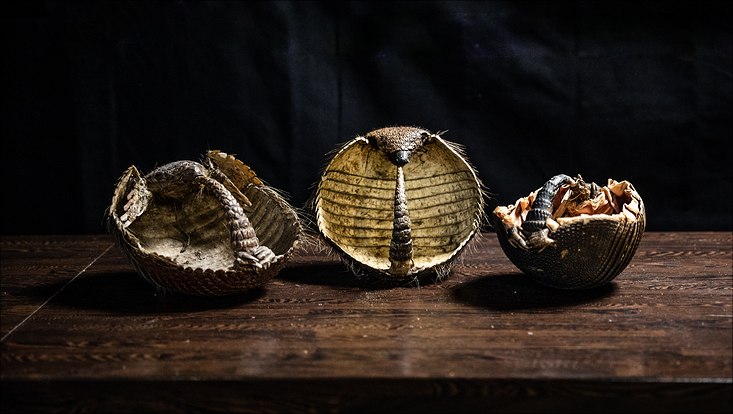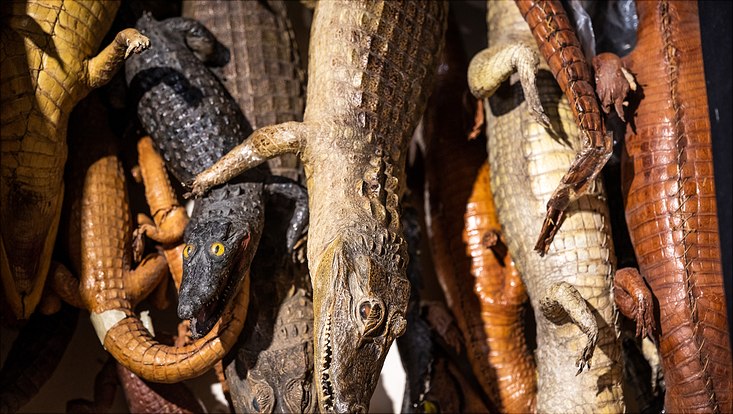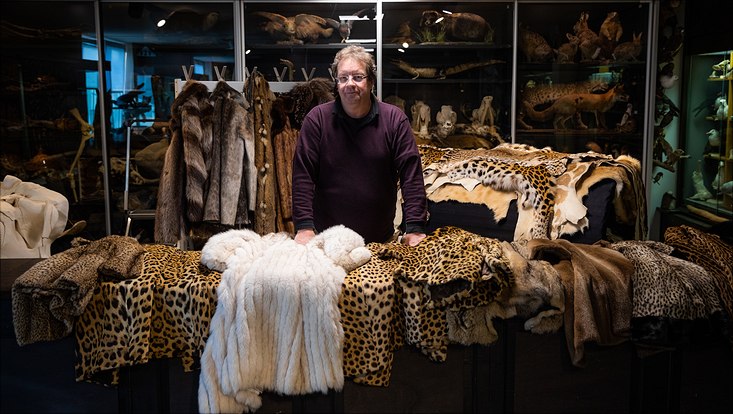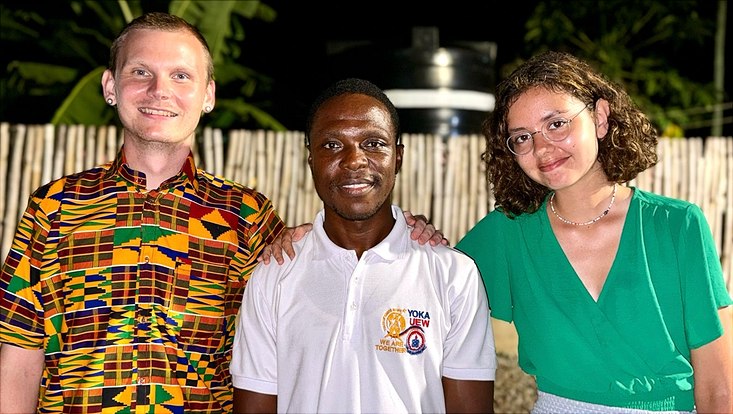Research project: New routes for wild animals“There is more money in illegal wildlife than in the drug trade.”
19 March 2021, by Christina Krätzig

Photo: UHH/Ohme
Universität Hamburg is using the Transfer@UHH fund to support 6 new research projects, including a project at the Center of Natural History (CeNak) on wildlife and the transmission of infection from animals to humans. The project is being coordinated by the evolutionary biologist Prof. Dr. Matthias Glaubrecht.
Prof. Glaubrecht, what is the focus of your research project?
In this project, CeNak will illuminate Hamburg’s role in the illegal wild animal trade and, together with its cooperation partners, develop methods to identify and deal with crime related to species protection. Another goal, against the backdrop of the corona pandemic, is to analyze the relationship between the spread of viruses such as COVID-19, the wild animal trade, and the destruction of biodiversity and to increase public awareness of these important issues in nature and species conservation.
CeNak will contribute its scientific expertise in the field of biodiversity research. For example, we are planning educational programs on species diversity and wild animal trade for schools and customs workers as well as for the interested public.

Concretely, we want to strengthen cooperation between CeNak and customs. In addition to identifying illegally traded wild animals, CeNak is helping customs and Hamburg conservation authorities with the molecular genetic analysis of wild animals. This way we can determine the origins and genealogy of confiscated wild animals, for example using DNA barcoding, and compare them with a database of DNA specimens.
DNA barcoding makes it easier, for example, to determine the species of animal material that cannot otherwise or precisely be specified, for example, the meat, fur remnants, or eggs of exotic species.
For which period are you receiving funding? And how much are you getting?
The funding will run from 15 November 2020 to 14 November 2021 and we will receive €50,000.
What are you spending the money on?
To build and expand a reference database on wild animals and comparative DNA specimens. We will also develop a communication plan on the topic of wild animal trade, mainly for staff at the customs agency but also for schools and the interested public. For the exhibition at the Zoological Museum, we will develop media on the topic of zoonoses— infectious diseases that can be transmitted from animals to humans and vice-versa.
What for you personally has been the most exciting finding so far?
It’s disturbing that the global wildlife trade has now become a billion-dollar business in which there are greater profits to be had than, for example, in the drug trade. At the same time, the continuing loss of wildlife is dramatic, due not least to hunting and poaching, which have decimated so many species, from elephants, rhinos, and tigers to pangolins and tortoises. This first became really clear to me when I was doing research for my recently published book on the end of evolution and human agency in species destruction, Das Ende der Evolution.Der Mensch und die Vernichtung der Arten.
It’s also clear that, after Frankfurt, Hamburg, with its harbor and airport, is a revolving door for illegal, but mostly unchecked trade with wildlife and its products. This is why we are taking concrete steps in this project to improve these checks. We also want to try to inform people about how wildlife trade and the destruction of natural habitats are connected to pandemics such as the current one.
Who profits from your research and how will you realize transfer?
The project aims to fight species conservation crime and thus to protect wildlife in nature. In view of the increasing danger posed by the transmission of infectious diseases by animals, the analysis of the wildlife trade in Hamburg will fill gaps in data and information. Furthermore, Hamburg institutions can use CeNak’s expertise and infrastructure, such as DNA barcoding, to clearly ascertain the wild animals and wild animal products confiscated by customs in line with species protection law. A planned manual on handling and and taking specimens can be used nationally by everyone working in the trade of especially protected species. And the reference database will be accessible to Hamburg institutions and institutions throughout northern Germany.
Concretely in Hamburg, institutions will be able to professionalize their work by networking. We will support customs with our expertise and the public will have an opportunity to inform itself comprehensively in the exhibition at the Zoological Museum and at events as well as to ask specialists questions. We will develop formats specifically for schools. Via Universität Hamburg’s FUNDus! portal, experts and laypeople alike can gain an overview of the wild animals that have made it to Hamburg’s shores.
Thanks to cooperation between the research institution CeNak, the Ministry of Environment and Energy’s department for international species conservation, the International Fund for Animal Welfare, and the Bernhard Nocht Institute for Tropical Medicine, expertise will be consolidated in Hamburg and the conditions ripe for a future specialist center in the field of wildlife trade and zoonoses. In the summer of 2020, CeNak had already taken up the topic of zooneses in a special presentation and this will now be integrated into the exhibition.
The Transfer@UHH fund is financed through the Excellence Strategy of the Federal and State Governments. Transfer@UHH funds were issued for the first time in 2020 and, in the future, will be issued yearly.





